1+1=2, no ?
Well that's not that simple.
First, keyboards have an annoying feature : an extra C key after the last octave, so it have to be removed : the U-shaped steel bed have to be cut as well as the PCB, and cut traces have to be repaired.
Secondly, another bed have to be made to hold the two keyboard together, and rigid enough so the whole keyboard will not bend. U and L shaped aluminum bar are the way to go. Optionally some cosmetic aluminum flat bars to hide the top of the keyboard and the end of the keys.
That should be enough for the mechanical issues.
The electronic circuit should be quite simple : 4x74164 parallel-out serial shift registers to select the 8x4=32 banks of 8 switches (so 32x8 = 256 switches, and 2 switches = 1 key so 128 keys max. ), with an Amega8 to select the banks sequentially / interpret the switch states on a 8bit port, to finally generate the MIDI key events with their velocities on a serial port. More details later on scanning techniques.
Optionally, an analog multiplexer (4051) to measure the resistance of switches (around 70ohms) for some MIDI pressure control ? An STM32F4Discovery as a synth + serial midi<->usb interface ?
 Kaeipnos
Kaeipnos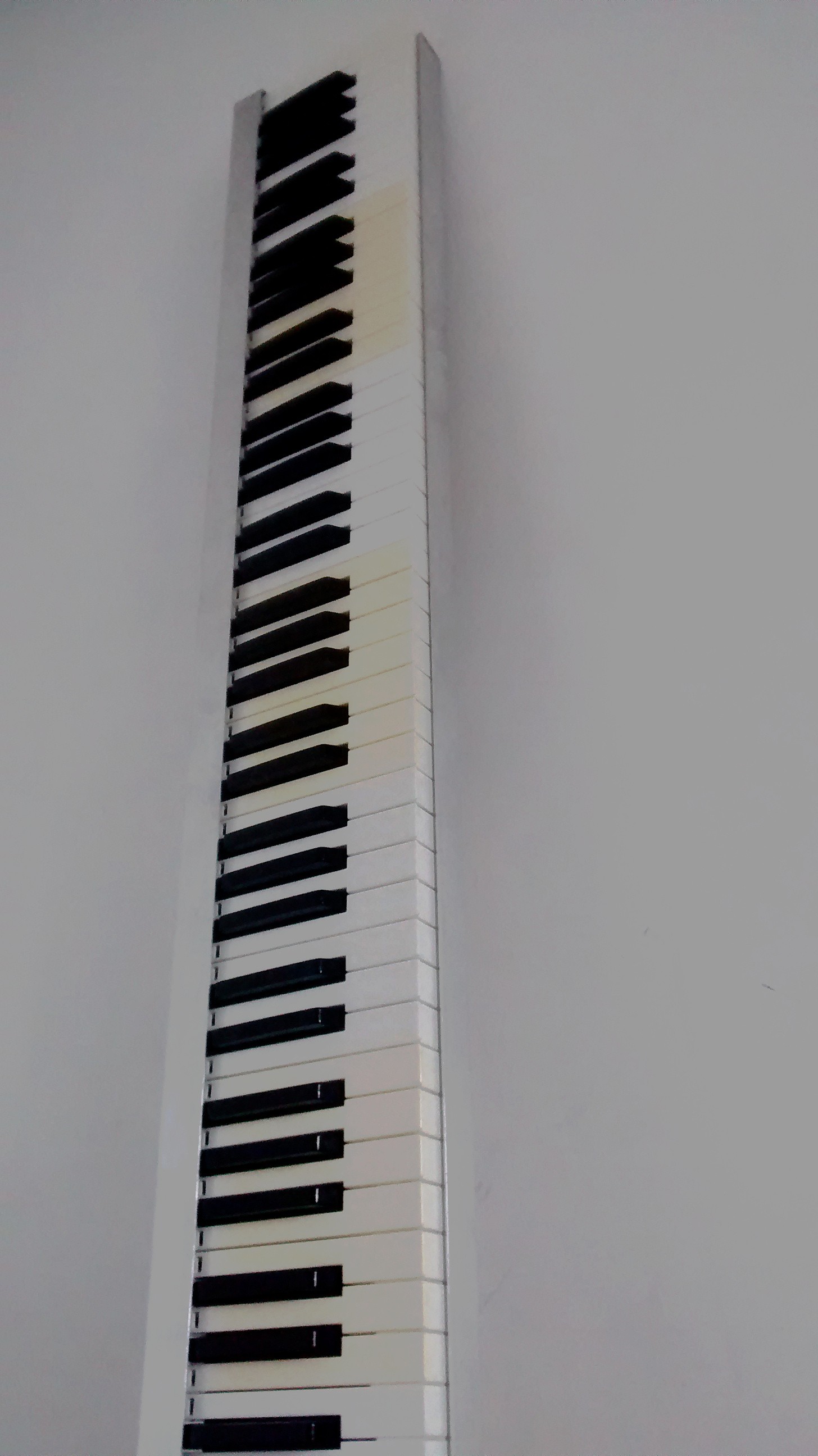
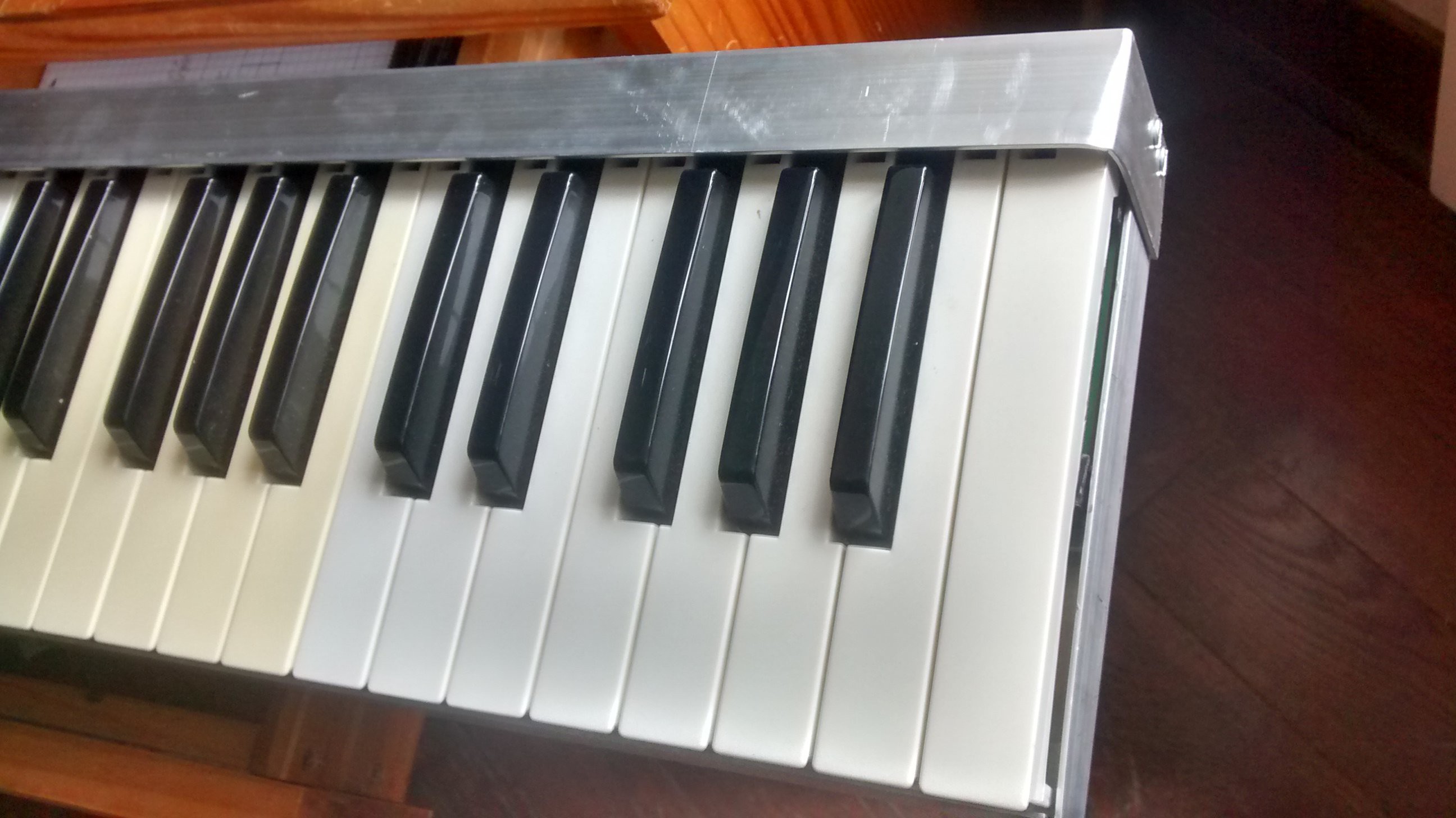 Rounded corners ! Too bad I fixed the upper bar too high : the tips of the keys are partially visible :(
Rounded corners ! Too bad I fixed the upper bar too high : the tips of the keys are partially visible :(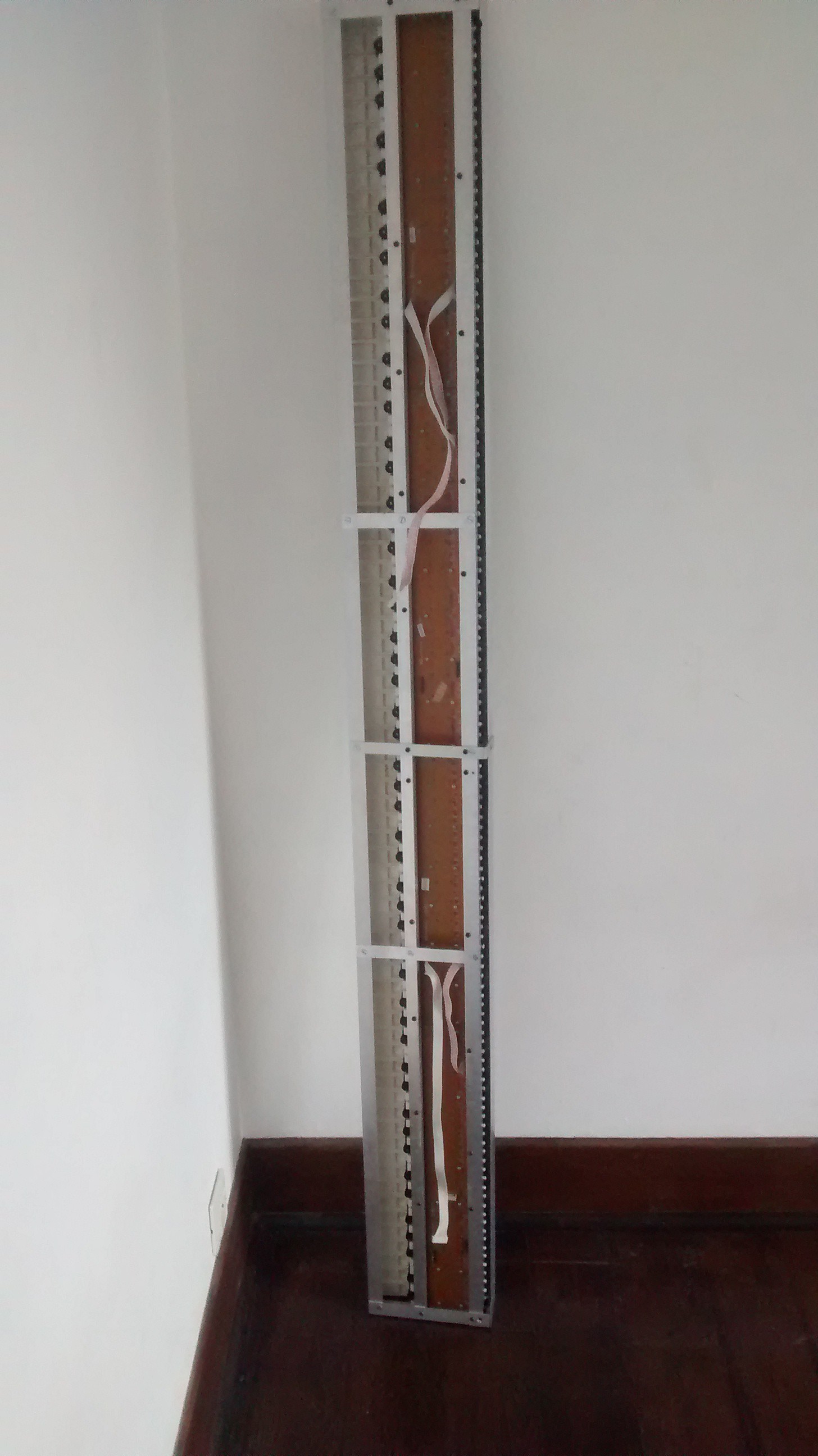
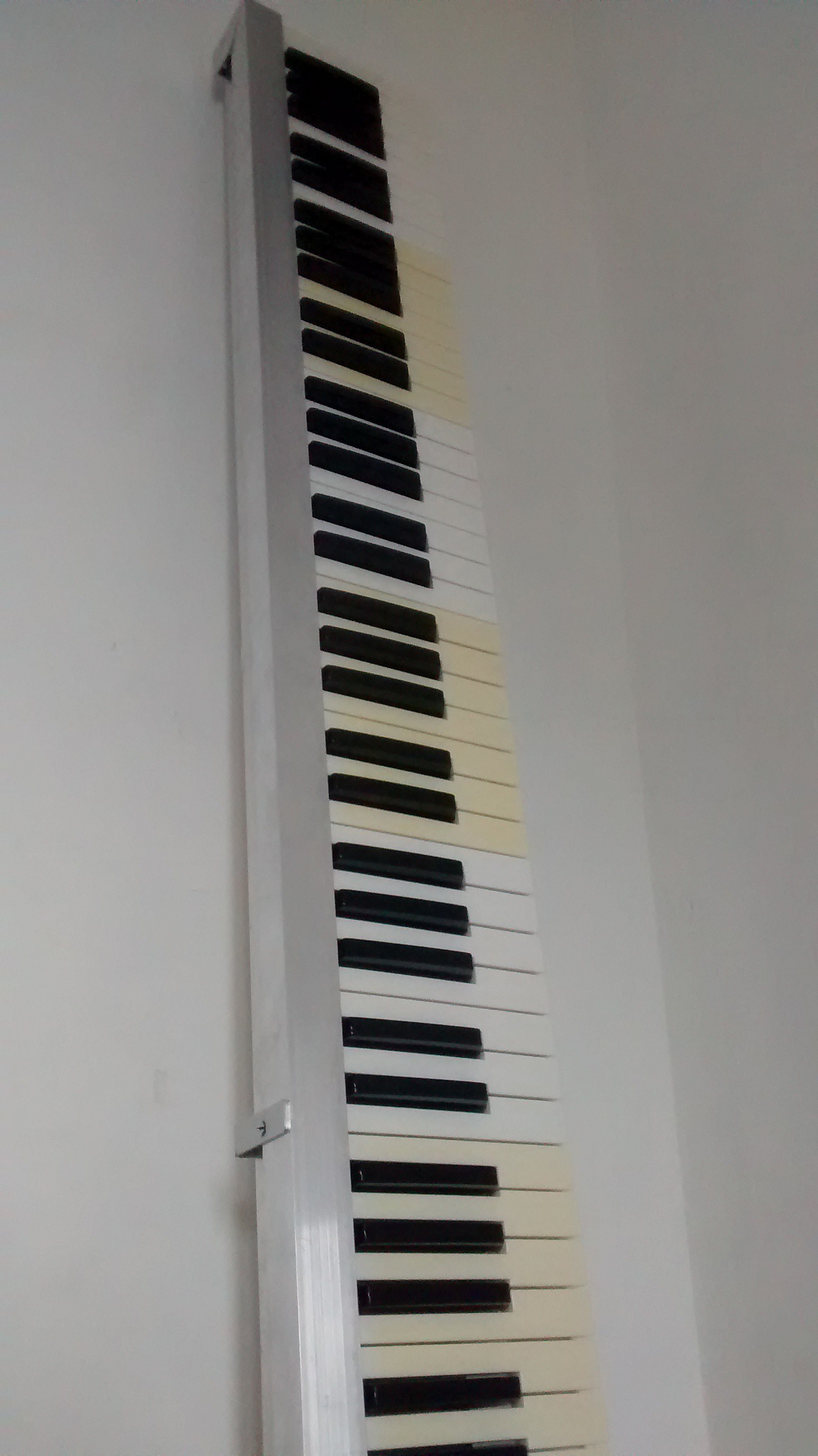
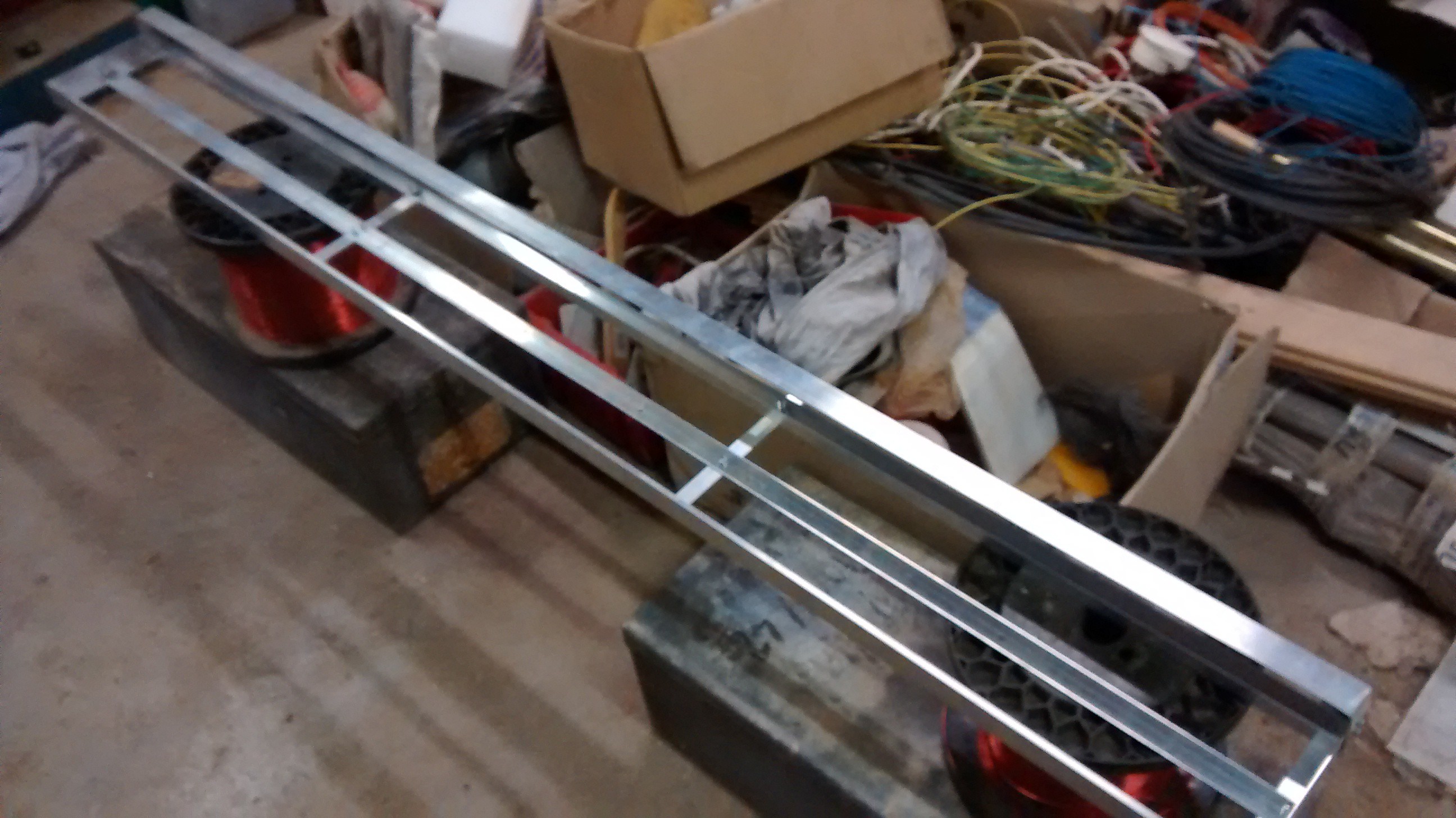
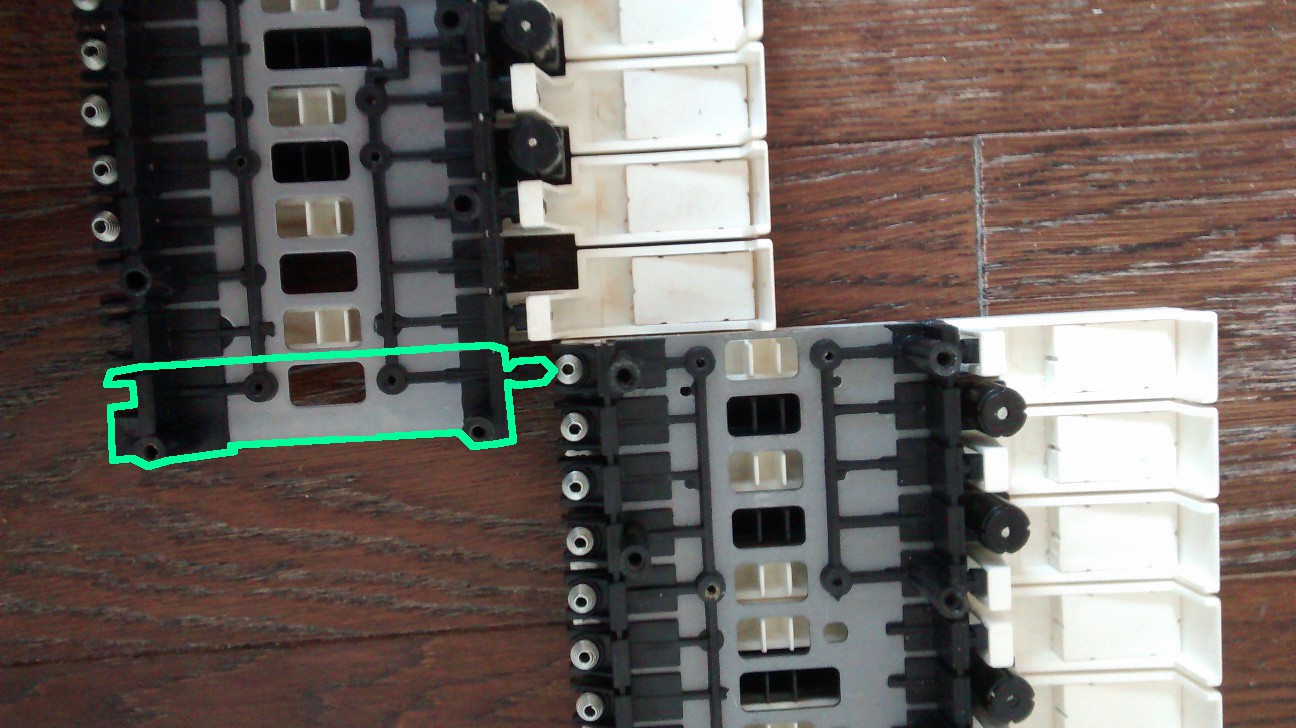
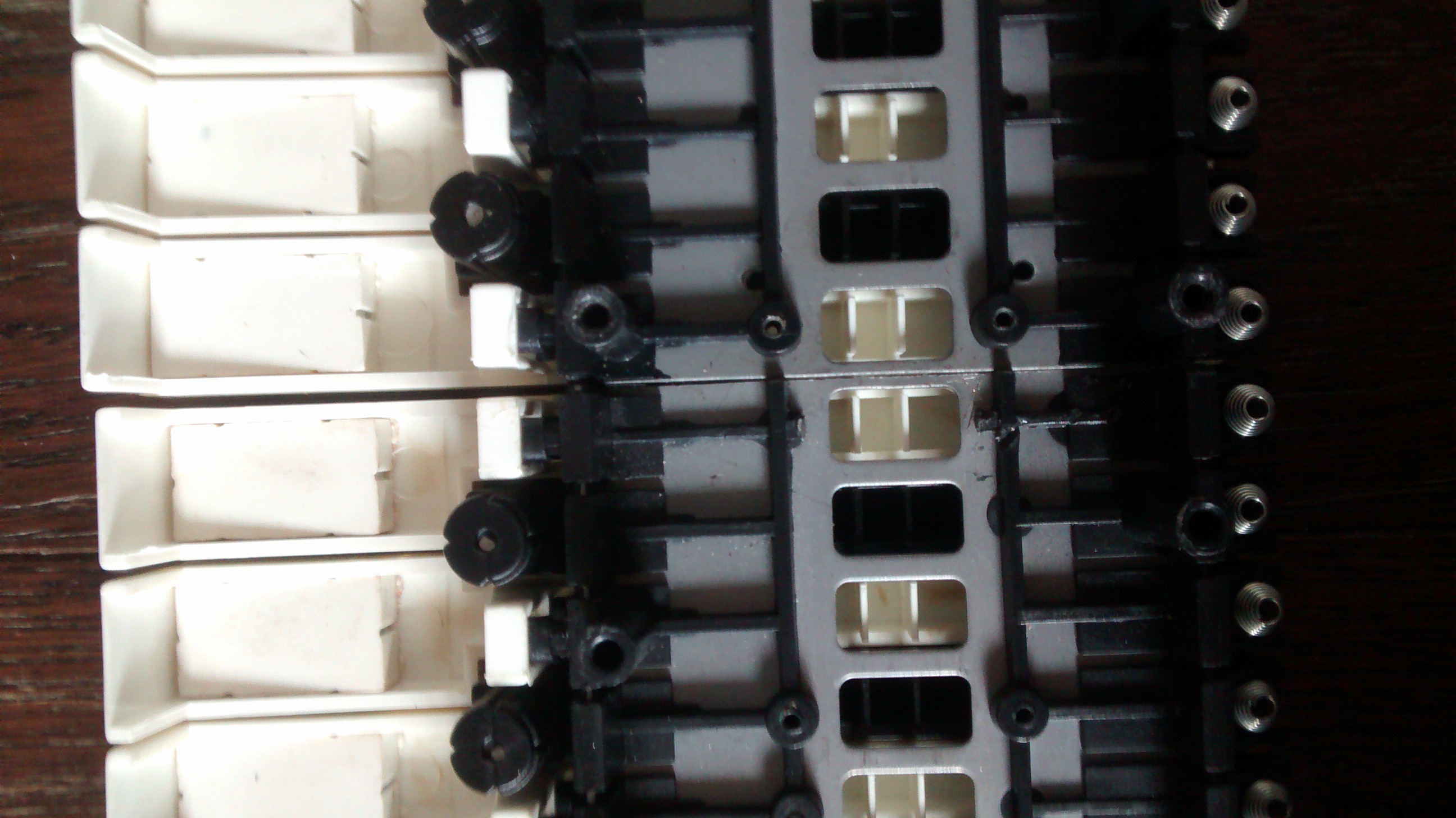


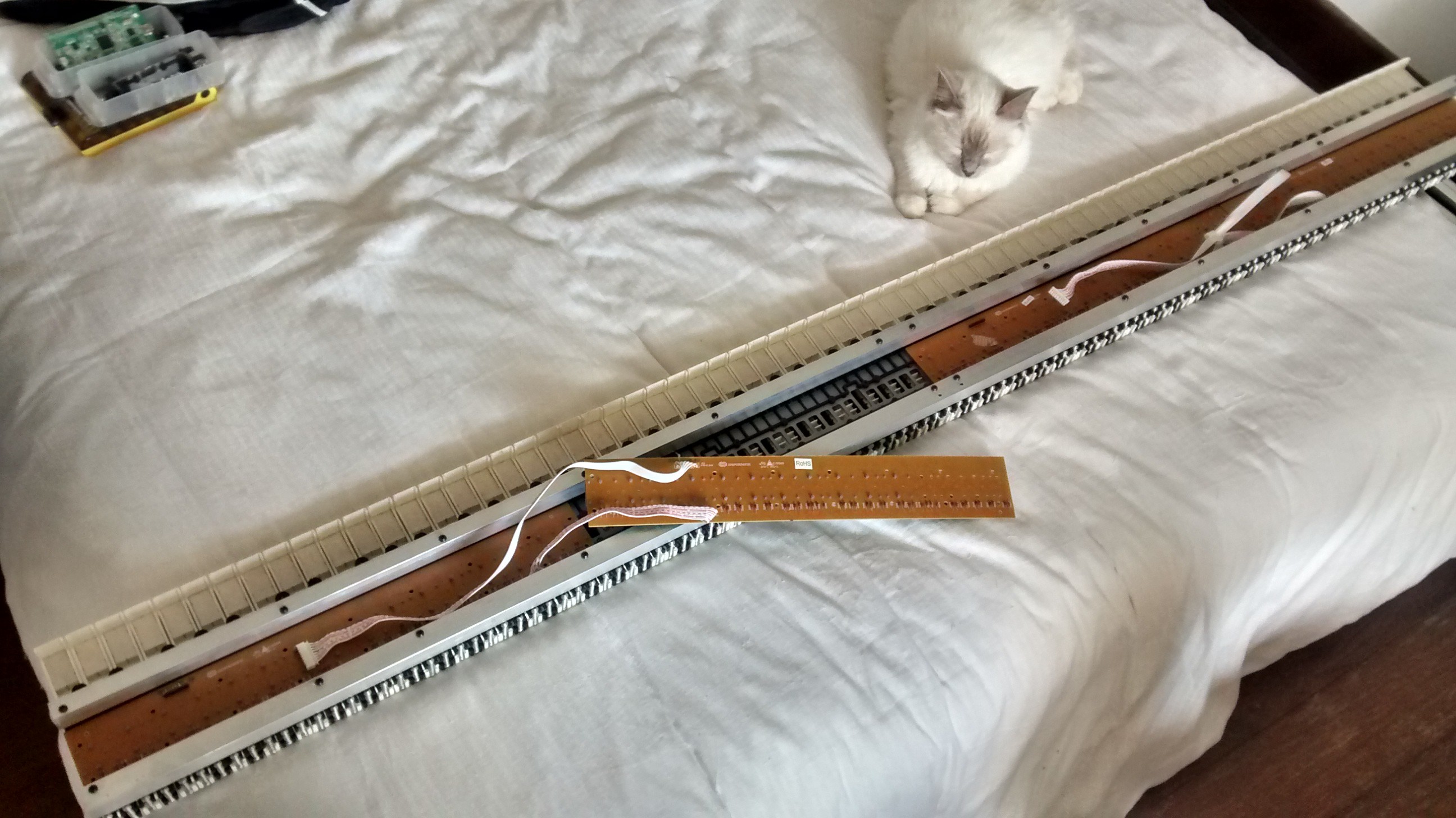
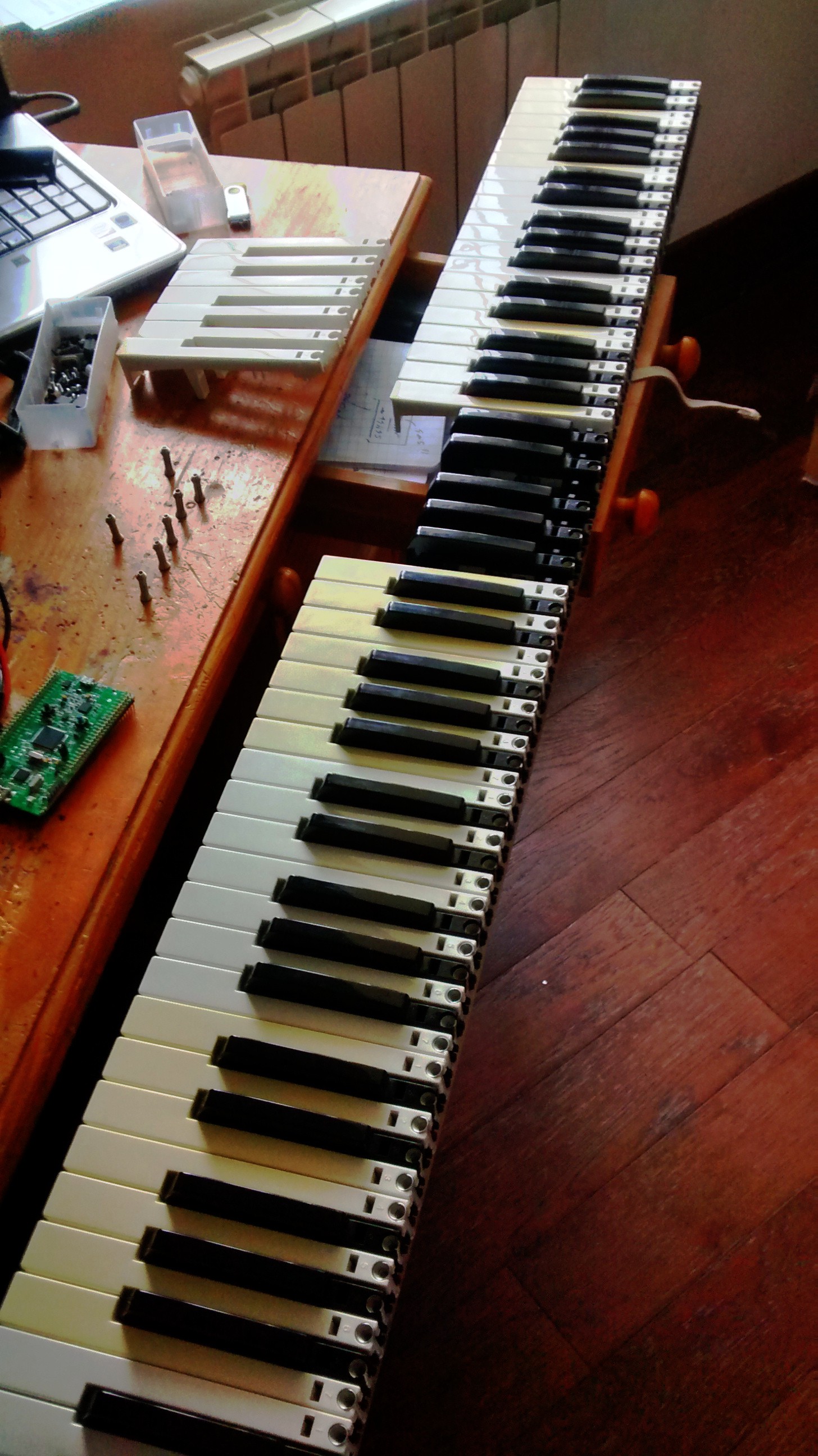

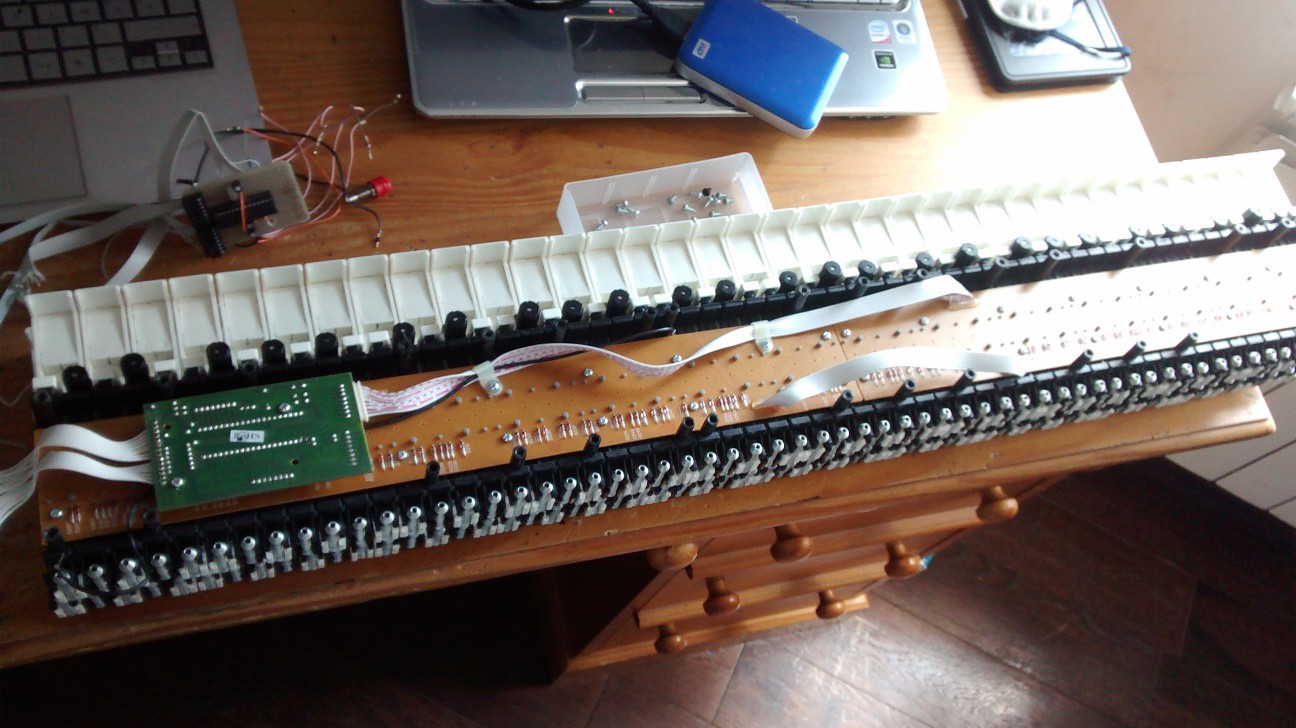
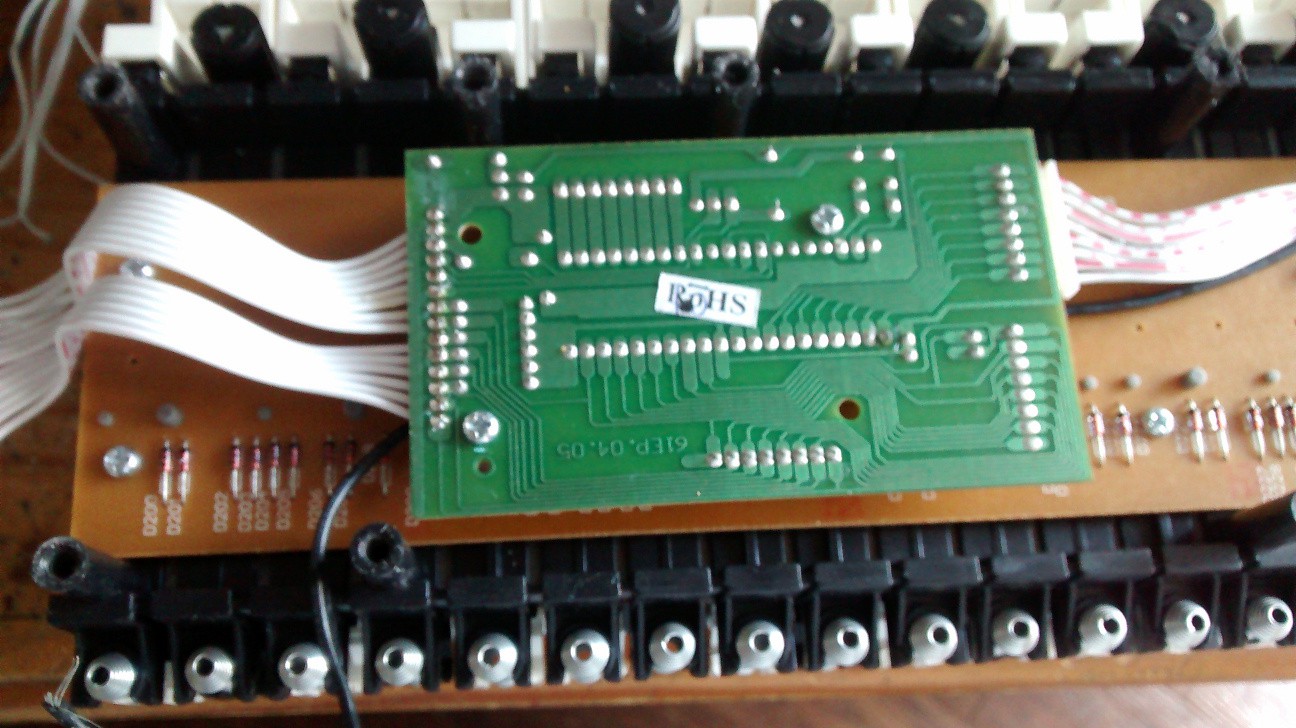
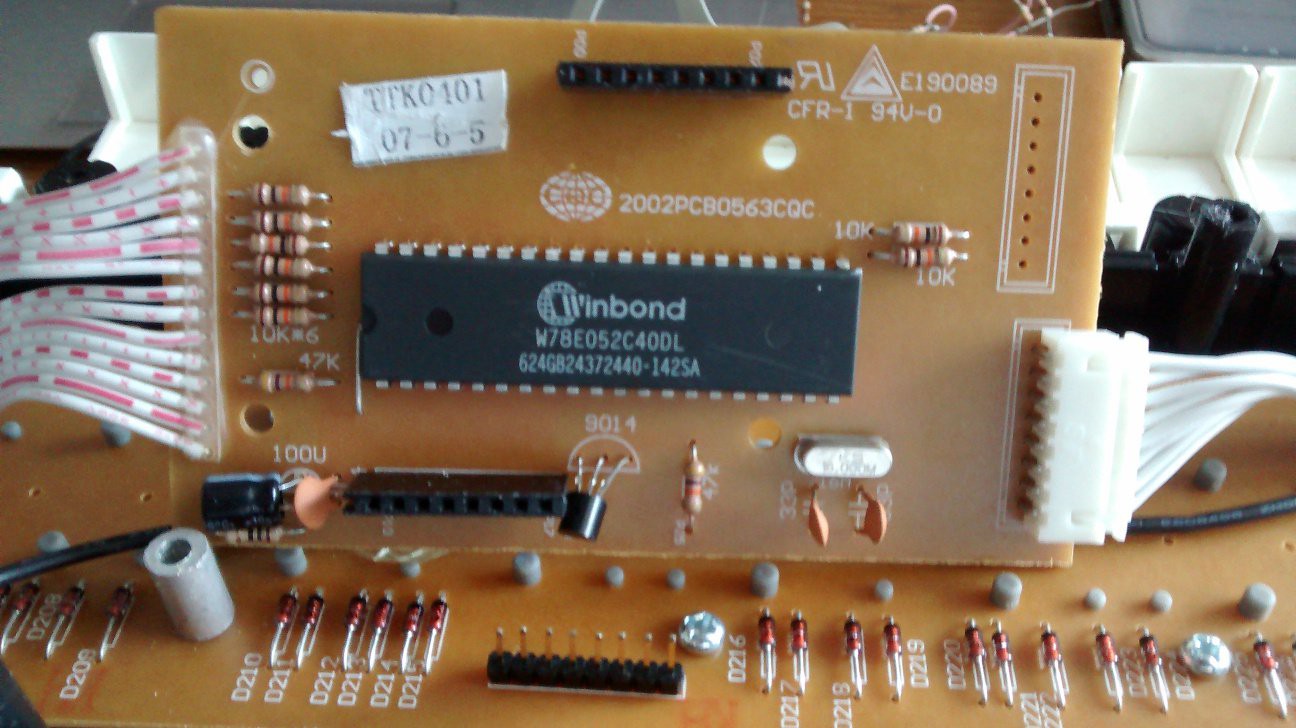
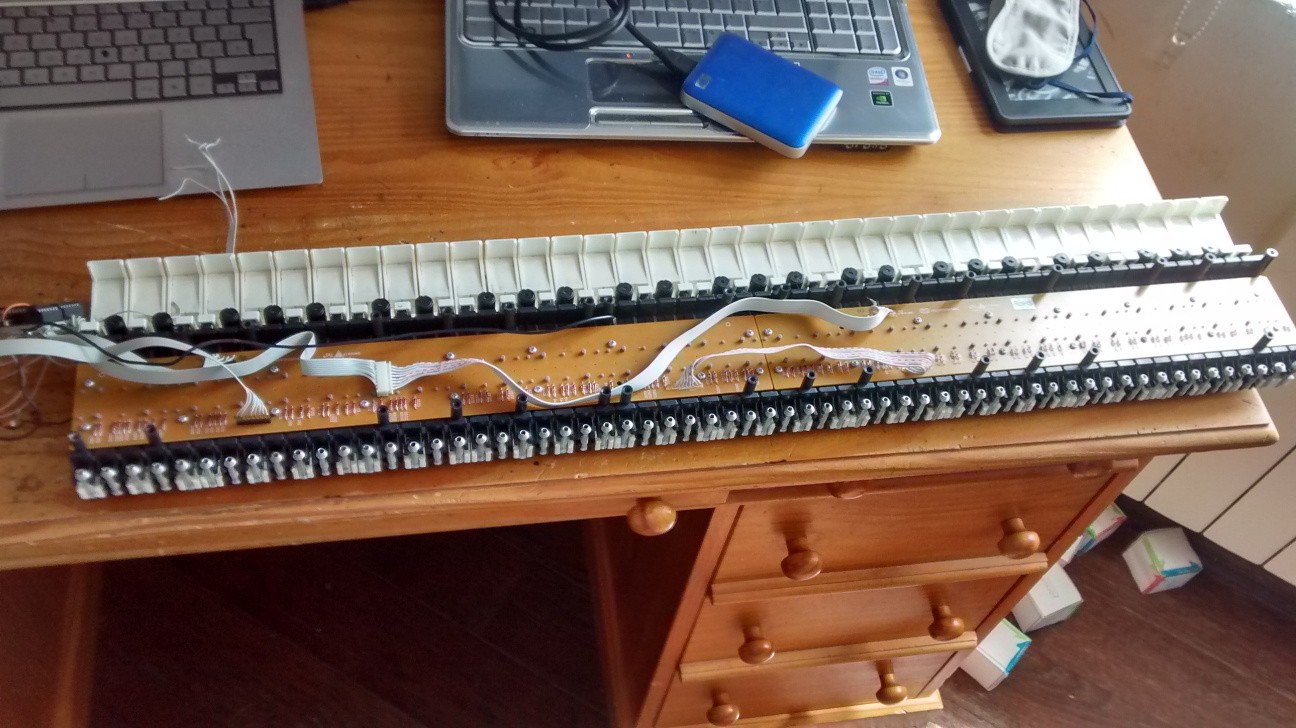

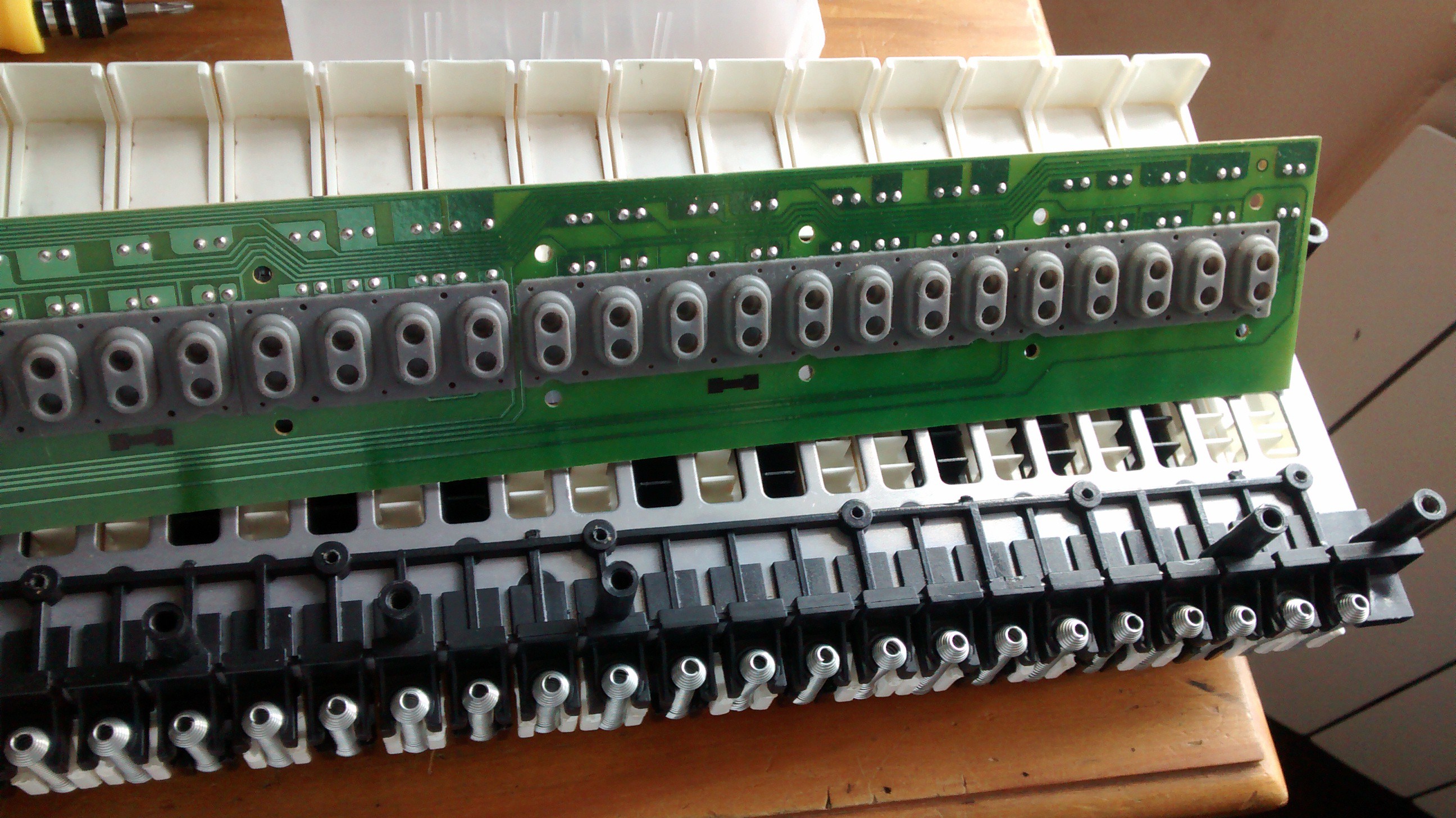
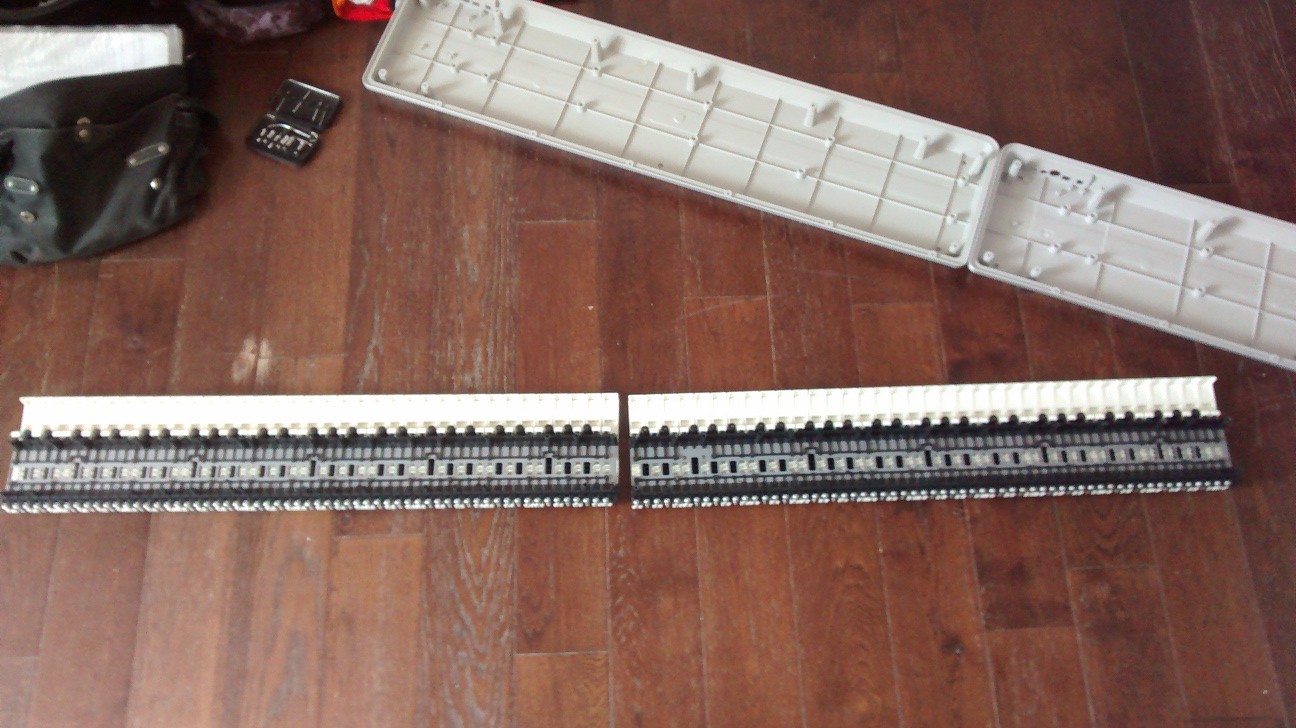


Great!!!,, I am interested in your project. I also have Yamaha P105 keyboard (88 key), main Midi Board and power board broken....
So, I am also tring to make midi board using by arduino. If you don't mind. Could you sharing your skill??? hardware software???